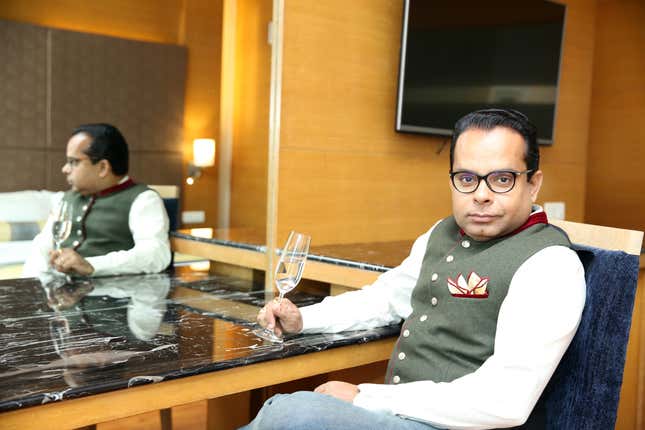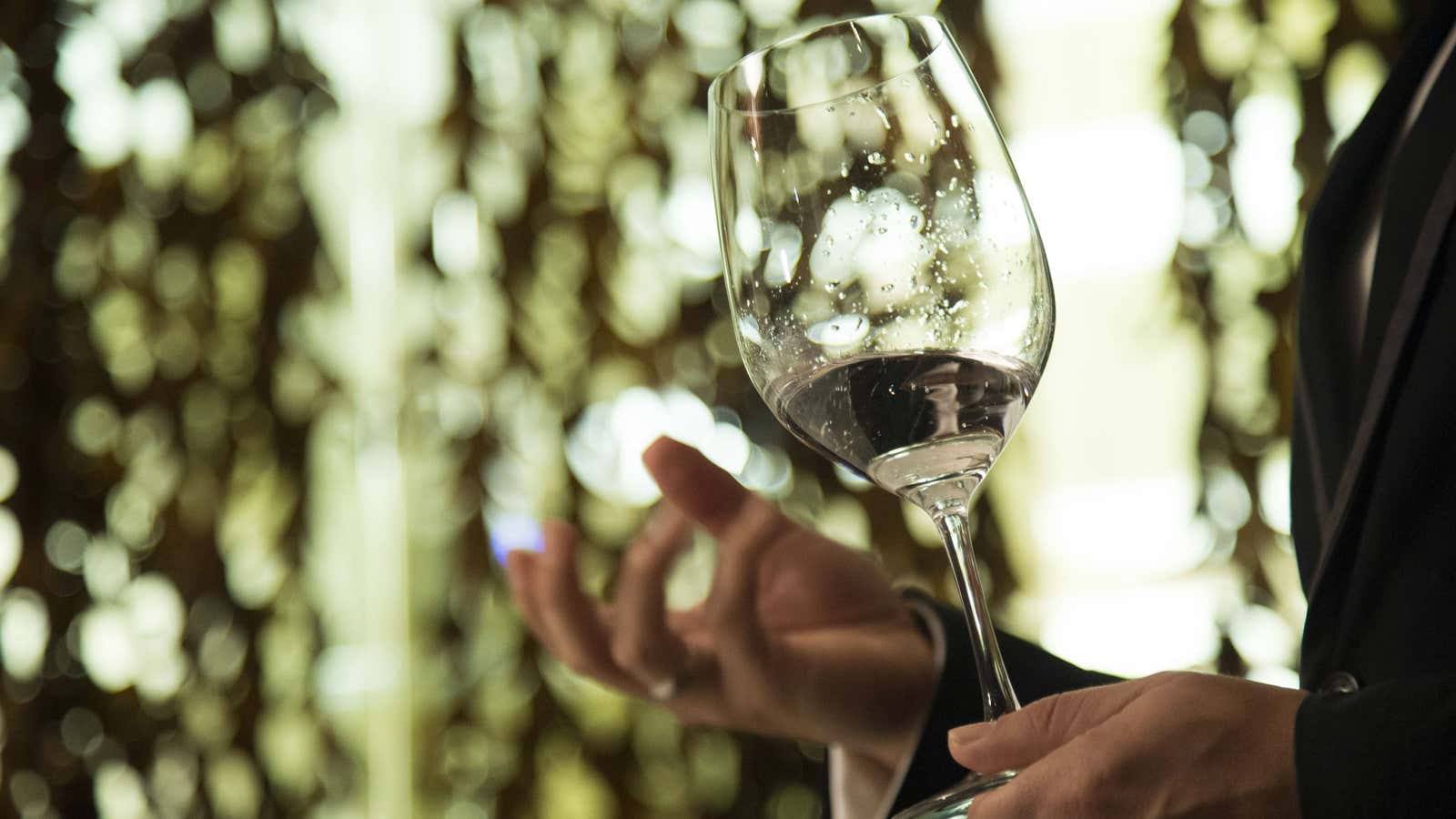As Indian diners increasingly get comfortable with pairing wines with food, the country’s first and only water sommelier wants them to start paying close attention to their water.
Much like in the case of wine, a water sommelier can taste it to determine its various qualities and recommend its best use—what food to drink it with, which type to use in which beverage, and so on.
Ganesh Iyer, currently director of operations for the Indian subcontinent for Finnish brand Veen, has spent over two decades in the beverage industry working with prominent brands such as Evian, Perrier, and Himalayan. Though he has always assumed sales and marketing roles, his interest in the behaviour of water drew him to get certified as a water sommelier at the Doemens Academy in Graefelfing, Germany.
“It is high time people in India pay attention to water, not only from a commercial point of view but as the basis of every other beverage, whether it’s wine, beer, coffee or tea,” said Iyer. “If you don’t get the water right, the end product won’t be right.”
Now, he’s brought the knowledge back to India. Below are edited excerpts of Quartz’s conversation with Iyer.
What does a water sommelier do for a living?
A water sommelier is someone who is able to detect, recognise, and differentiate between types of natural mineral waters. We’re not talking about packaged water like Kinley or Bisleri which are fluoride- and chlorine-treated. It’s about water from a source directly without treatment. It’s based on natural characteristics such as mineral composition, carbonation, the age of the water, the hardness, the origin, the pH level, etc. Someone who has been trained extensively recommends what water is to be consumed at what time, and how it can be paired with cuisines and wine and spirits.

How did you decide to become one?
We’ve known about wine sommeliers but the concept of a water sommelier gained prominence sometime in 2008-2009. Martin Riese was at the forefront. He’s considered the world’s first water sommelier. I’ve been tracking this for a decade, waiting for an opportune time when I felt I was ready (to undergo training).
How have the concepts of water and water sommeliers evolved in the Indian market over the last two decades?
Interestingly, in the late 1990s, there was just one local water bottle brand in India. Between the late 90s to the present, close to a dozen have launched in the market. There is an emergence of preference for glass over plastic bottles. Patrons who frequent fine dine restaurants and travel the world, know their water. Some ask for the same service at their respective hotels and restaurants.
In India, people still don’t have a clue what a water sommelier really is. They can relate it to someone being an expert of water but don’t know more.
Tell me about the course you did. Was it expensive? How long was it? What were the classes like?
My company sponsored me. It costs between Rs3.5 lakh and Rs4.5 lakh ($5,077 and $6,527) on average. It’s an 18-day programme during which we had around 80 to 90 odd training stations and sessions. There would be theory, practical, factory visits…I had the opportunity to visit three factories. Once you undergo this training, you’ve got to appear for an examination and pass it. You’re given samples of water to be differentiated on the basis of appearance, smell, taste, and more. You need to taste the water and identify what is the level of potassium, sodium bicarbonate, minerals, etc.
Who can become a water sommelier?
Since the concept is relatively nascent, there is no bar to who can participate. You could just be a water enthusiast. It can be someone new to the industry or like me, who’s spent 25 years in beverages. You cannot prepare anything because what you’ll be taught is completely unknown. Reading books is not enough. Until you sit through practical sessions and factory visits to see how water is made, you won’t know.
We had a batch of 18-odd people from different parts of the world. A couple of them were hoteliers, one was the marketing head of beverage brand, two or three guys were fresh out of college and wanted to know how water behaves. One nutritionist was interested in knowing how water could contribute to her profession.
Where can water sommeliers be employed?
Rightfully, a hotel or restaurant should have water sommelier. Even if you’re representing a beverage (company), it is important to know the technical details of how water behaves in a set of conditions. In a country like ours, why a water sommelier is very important is that people do not have a feeling for water, what revenues water can contribute, how it can be paired with food and wine, and so on.
It’s especially useful here because India has so many cuisines—it’s not one-dimensional. With Bengali food, what kind of water should one have with machcher jhol (fish curry)? What should you have with a curry down south?
What is the biggest challenge for water sommeliers in India, apart from lack of awareness?
One of the biggest challenges in India is that we have just three or four domestic natural mineral waters coming from local sources and there aren’t many imported players because legislation is a bit stiff and import duty is high. Then the water needs to have the Bureau of Indian Standards (BIS) approval. Generally speaking, it is an uphill task to get natural mineral waters in India.
Which is your favourite water so far?
I’m not being diplomatic but there’s nothing called good water or bad water. There’s a water from Denmark that’s bottled after a hell lot of effort. You need to travel deep into the arctic pool to get it. There’s a water called ROI which has the highest amount of magnesium. If people in this part of the world were to drink it, you’d puke. The nature of water varies.
How expensive can these waters get and is India ready to pay for it?
I mean, if you have to make an arctic expedition for a week to find the water, it’s price goes up. It depends on the time taken to source and process that water.
Though people say pricing is the critical factor, if the product is right and shows the right value, I don’t think it’ll be a problem.
